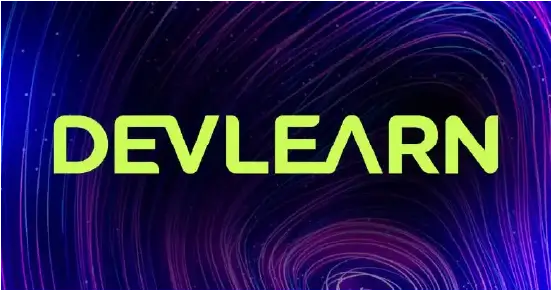Your L&D team was lauded for moving with agility to help the organization get back on its feet when the workforce shifted mainly to remote work. You reacted well to the situation, but did you learn from it? If you are back to wondering how the latest workforce shift—back to the office or to hybrid teams—is going to impact your team and its work, that is a sign that your organization’s or team’s learning culture is immature.
Issues with learning maturity are rather common in organizations, not just L&D departments. To compound the problem, learning leaders and their teams generally have volatile project workloads.
Fortunately, there are things you as the L&D leader can do to help mature your department (or confirm that it’s mature)! In an effort to assist learning leaders who are getting their L&D teams ready for the next wave of change, I will break down the topics of learning maturity and agility. I’ll also provide some suggestions that should help you barely break a sweat as you face down a barrage of ever-changing demands.
The interplay of maturity and agility
As your L&D team matures, it becomes less reactive and more proactive, which ultimately leads to being agile. That agility lends to dealing with dynamic shifts, often without warning—like an entire workforce moving to remote work—in adaptable manners that are efficient. Not to mention managed with operational finesse: The continuity of a productive, collaborative workforce is maintained (if not improved) by increased agility.
So, what does maturity look like? Maturity aligns to many things, like work processes. Things as simple as a style guide, a naming convention, or a central file repository with a common file structure are all elements of efficient operations. However, everyone must be using them consistently and in the same way.
L&D team maturity
Let’s think beyond the digital solutions and look at the team for aspects of maturity and agility:
- Is only one team member skilled to put products in the LMS, or is there a backup resource?
- Is there a team charter agreement that, given specific project issues, a team member can call an ad hoc Scrum to gain team input and advice?
- Do you run your high-demand projects with a lead and an understudy to minimize risk?
- Does a team member update a list monthly of vendors and contractors with available bandwidth?
Each of these bullets focuses on maturing an operational process for project efficiency and risk mitigation and, of course, agility.
Maturity and mature project management provide a platform to agility: If your L&D team were required to change gears and accommodate a project with a quick turnaround, a learning leader with a mature team would feel confident that they could shift the priorities of team members and keep current project work moving.
Now, how do you get this going for your team—or validate that you are doing it?
Processes and practices for maturity perfection
Whether it is for the current situation of folks moving back to an office or another major initiative that might rock your L&D department, understanding your level of maturity will smooth your efforts. You can gain this understanding by performing an audit.
The most common and easiest place to start tuning into your L&D team’s maturity is through practice and process. Think broadly about the general operational framework under which your team performs by asking:
- Does my team have standards and processes in place for managing all project types and products?
- Does my team follow those processes, style standards, templates, etc. consistently and repeatedly?
- Do I have a functional understanding of my team’s current capacity and projected bandwidth?
- Do I understand future department demands and the gaps to meeting those demands?
The more “no” answers, the more likely it is that the L&D team is working in a constantly reactive state, perhaps feeling burned out and overwhelmed. These are indicators of an immature department, one with informal processes and practices and no data to help guide or inform their process improvement. This denotes an inability to be agile.
Less reaction; more agile satisfaction
In addition to looking at maturity through common processes and operational practices, we can also look at maturity through the lens of agility.
As an example, let’s take a look at what your team did to support the first shift in work locations. Start by considering a scale of reactive to proactive and where you and your team would score themselves on the following:
- Did your L&D team have an approach that could be modified or adapted (to assist with the shift)?
- Did this demand halt projects? If yes, what percentage and for how long?
- Was your full team available, or were they also managing life dynamics due to the work location shift?
- Were new technologies introduced into the company’s workflow?
- Were new technologies required for your team specifically to assist in workflow?
By asking these questions, you are creating a profile of the former state and the current state. Knowing that another shift is coming, compare the two states and discuss with your team. Let them help you recognize any potential gaps and risks—and create plans and pathways for addressing each.
More importantly, keep this information well documented and share it with your team. They will appreciate being valued for their insights and strategic thinking, especially when the result is a high-performance (aka agile) team.
Before you starting growing up
The questions above are probably enough to get you started, but I want to conclude with ideas that may help you take these recommendations and move them forward more quickly:
- Maturity modeling is not new. There are plenty of models. Two I would recommend looking at are the Learning Business Maturity Model™ by Jeff Cobb and Celisa Steele and High-Impact Learning Organization Maturity Model™ by Bersin & Associates. Both are easy-to-comprehend and can fit most organizations.
- You don’t have to use a pre-established model. In fact, there are a lot of models that cross-blend maturity, agility, performance, and capabilities. Create your own to focus your maturity efforts. The key is to understand the underlying framework, which relies on evaluating your criteria on a spectrum starting with definitions from immature—ill-defined, ad-hoc, and reactionary—and moving up to mature—data-driven, optimized, and strategic.
- There is risk in working through your departmental needs without considering how the department interfaces with the rest of the organization’s business operations. Are your methods counterproductive to how the organization functions? Even if there are no wider-organizational initiatives on maturing operations, capabilities, or performance, you can still address internal departmental maturity, just be mindful that your efforts may not fully mature without the reciprocity of the organization.
- A recent McKinsey report on organization agility and business impact denoted four characteristics that increase the chances of successful agile transformation. The most important item was having leadership buy-in and commitment to leading the change.
A final reality check on ad-hoc agility
If you still aren’t convinced of the need for learning maturity, let me put it this way: You are constantly being asked to do more things in less time with fewer people and less support. How can you do all of that if you are not agile?
Agility comes through having processes that can stand the test of time and adapt, shift with you—mature processes that mean your team does not have to reinvent the wheel each time it faces a challenge or crisis.
Learning leaders and the L&D team are among the most valuable commodities in every organization. L&D is usually the first department to get its budget cut, yet the team is constantly in the hot seat for driving performance. How can your team drive performance if it’s under-performing and sub-optimized?
Lead by example: Push your team to “grow up” and become mature and agile.
Explore leadership issues with your peers
Explore the strategies and skills required to navigate the needs of today’s ever-changing workplace with your learning leadership peers. Join the Learning Leaders Alliance, a vendor-neutral global community for learning leaders who want to stay ahead of the curve and for aspiring leaders wanting to build their skillsets.
The LLA and Learning Solutions are exploring issues that learning leaders face as their organizations adjust to the “new normal” in the Learning Leaders Global Online Forum, July 21–22. The Learning Guild’s Alliance Membership package includes access to exclusive digital events, including the Online Forum, as well as content curated for today’s modern learning leader, opportunities to attend in-person learning leadership events held around the globe, and more. See the details here.










